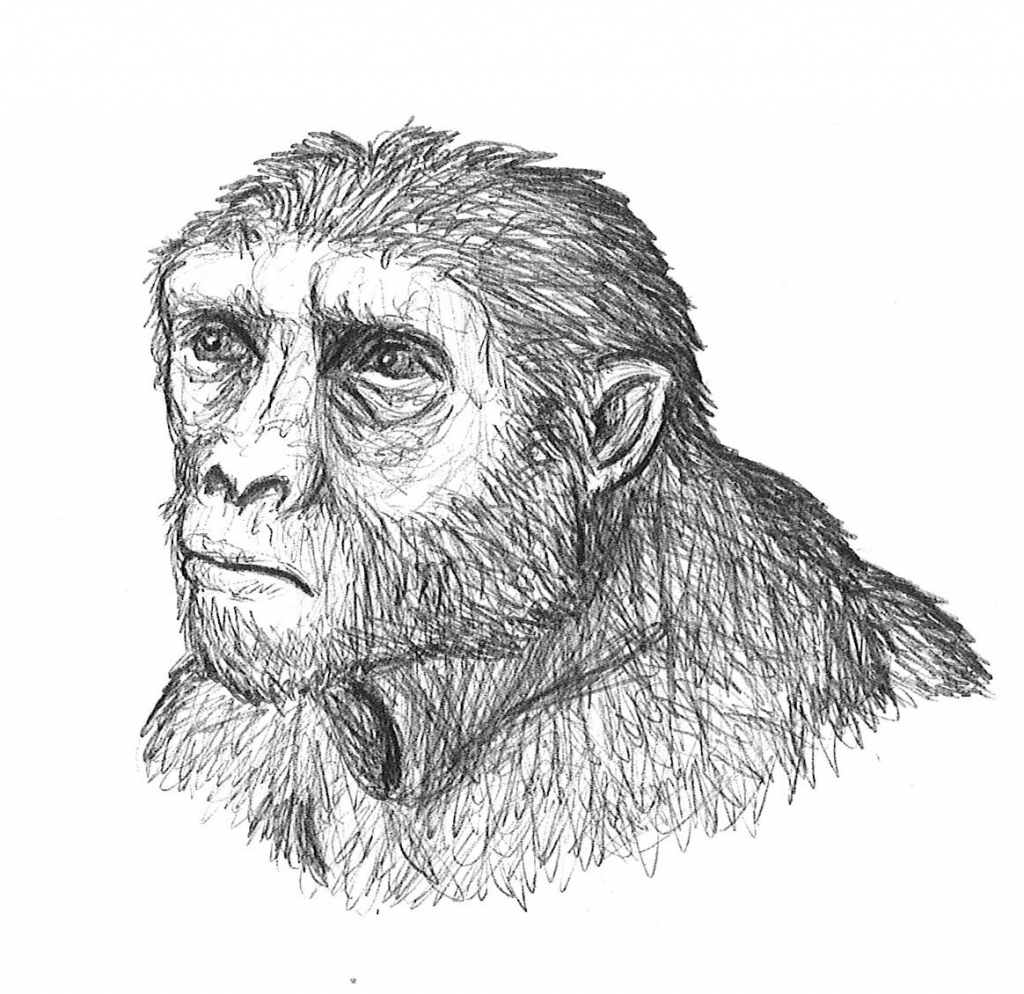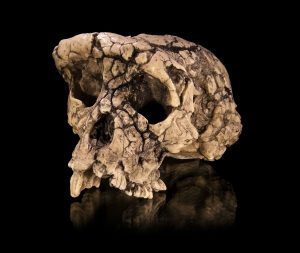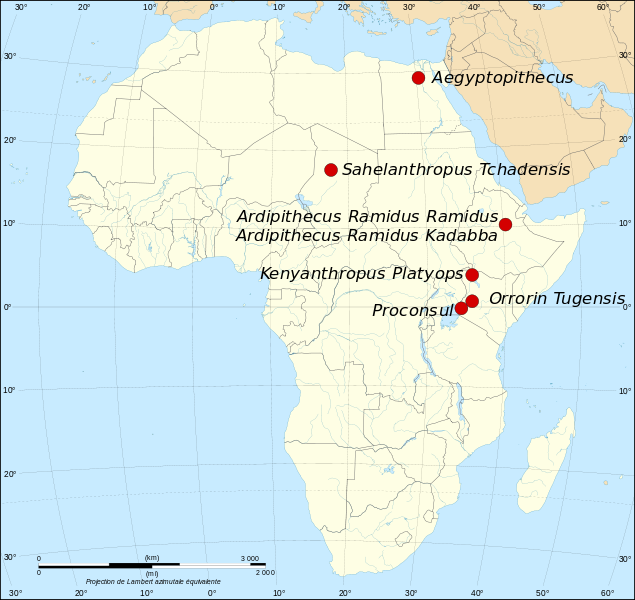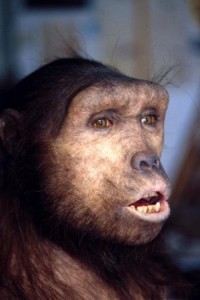Part II: Miocene Epoch
6. Sahelanthropus tchadensis
Sahelanthropus tchadensis (<7mya)
(“human from the sahel” / Chad)

SITES
Toros-Menalla, Chad
PEOPLE
Michel Brunet
INTRODUCTION
The Sahelanthropus tchadensis specimen (see Figure 6.2) was discovered in 2001 at the site of Toros-Menalla, in the Djurab Desert of northern Chad, by Michel Brunet and associates. Brunet’s incredible years-long quest for hominins in that area is documented in the NOVA series, Becoming Human (www.pbs.org/wgbh/nova/evolution/becoming-human.html). The species name translates to “human from the sahel of Chad.” The sahel is the region of dry grasslands south of the Sahara desert. The skull has been nicknamed “Toumai” in the Dazaga language, meaning “hope of life.”

The location of the fossil material came as a surprise in that only one species of hominin had ever been discovered west of the Great Rift Valley of East Africa, i.e. Australopithecus bahrelghazali (see Chapter 12). However in 1998, Noel Boaz speculated that, contrary to the Rift theory for the origin of the hominins, a portion of the ancestral stock that gave rise to the chimp and human lineages became isolated in a riparian (i.e. riverine or gallery) forest zone in Chad that was surrounded by arid, open land. At a later point in time, a forest corridor allowed their movement into East Africa. Part of the problem at that point in paleoanthropology was that no species of hominins, prior to the australopiths, had been discovered in East Africa. They seemingly appeared de novo in the fossil record, beginning about 3.5 mya, with no intervening stages or “missing links” in evidence. We now have much older hominin species from Kenya and Ethiopia, i.e. Orrorin tugenensis and Ardipiths, respectively.

PHYLOGENY
While the phylogeny of S. tchadensis is unknown, some researchers believe that it may represent a stem or basal hominin, i.e. one of the earliest members of our tribal tree. (Note: Once a genus is used the first time in a document, it can subsequently be abbreviated.) Just as we do not know the ancestry of the species, we do not have any species that are good contenders for its descendants.
DISCOVERY AND GEOGRAPHIC RANGE
As mentioned, the holotype (the fossil(s) from a particular individual that are assigned to and used to define the characteristics of a species) was discovered at the desert site of Toros Menalla (see Figure 6.3). Unless fossils are discovered elsewhere, it is impossible to speculate about the extent of the geographic range of the species.

PHYSICAL CHARACTERISTICS
The skull of S. tchadensis is very robust, with a chimp-sized brain and pronounced ape-like muscle attachments. While only fragmentary postcranial material has been discovered, some researchers claim that the foramen magnum is anteriorly oriented, suggesting an upright and bipedal hominin. Pronounced brow ridges are also concordant with early hominin status. The facial profile is surprisingly orthognathic and the jaws lack the honing complex, leading some researchers to speculate that S. tchadensis may lie near the base of our family tree, versus other phylogenetic scenarios. However, the pronounced posterior neck muscle attachments have led others to suggest that S. tchadensis may have been quadrupedal.
ENVIRONMENT AND WAY OF LIFE
Based upon fossilized faunal remains at the site, such as freshwater fish, rodents, and monkeys, it is likely that S. tchadensis inhabited a forest environment in close proximity to an ancient lake (Wayman 2012). Their way of life was likely that of a forest-dwelling ape. Like ardipiths (see Chapter 8), their molar enamel was thinner than that of the later australopiths and they thus likely had a chimp-like diet consisting of fruit, young leaves, and tender shoots.

